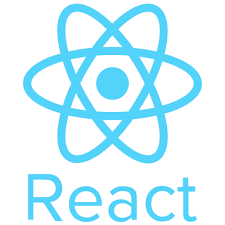
Cours de formation en ligne sur Google Meet + Cours au format PDF
25.00$
CompareCloud CRM Training
Description of the Cloud CRM Training
This Cloud CRM training program is designed to equip professionals with the skills needed to effectively use, manage, and optimize cloud-based CRM platforms. Whether it’s improving customer relationship management, automating sales and marketing processes, or analyzing customer data, this course provides a comprehensive understanding of the features and advantages of modern CRM solutions. Through hands-on exercises and real-world use cases, participants will learn to leverage cloud tools fully to increase efficiency and customer satisfaction.
Target Audience: Marketing, sales, and customer operations professionals, as well as system administrators and data analysts seeking to specialize in Cloud CRM.
Training Curriculum and Chapters
1. Introduction to CRM and Cloud Solutions
- What is a CRM?
- History and evolution of CRMs
- Cloud CRM vs on-premise CRM: Benefits and drawbacks
- Key Cloud CRM platforms: Salesforce, Microsoft Dynamics 365, HubSpot, etc.
2. Core Features of Cloud CRM Solutions
- Contact, opportunity, and lead management
- Sales and customer support process automation
- Marketing automation: campaigns, segmentation, personalization
- Real-time analytics and reporting
3. Cloud CRM Setup and Administration
- Initial setup and user creation
- Role and permission management
- Security and access control in a cloud environment
- Customizing views and dashboards
4. Process Integration and Automation
- Integrating CRM with other tools (ERP, e-commerce, etc.)
- Automating workflows for sales and customer support
- Using APIs to customize and connect the CRM
- AI and machine learning functionalities in Cloud CRM
5. Managing Customer Data in Cloud CRM
- Importing, exporting, and data cleansing
- Data migration tools for the Cloud
- Using data extensions to enrich product data
- Data compliance and privacy: GDPR, CCPA, etc.
6. Advanced CRM Functions
- Advanced segmentation and customer targeting
- Lead scoring and opportunity prediction
- Customer support automation with chatbots
- Loyalty management and retention programs
7. Performance Monitoring and Measurement
- Setting up KPIs and performance indicators
- Utilizing reports and dashboards
- Analyzing trends and data-driven decision-making
- Implementing continuous optimization for sales and marketing
8. Practical Project: Implementing a Cloud CRM
- Selecting a real-world use case (e.g., product launch)
- Solution implementation in a sandbox environment
- Testing and validation of automated processes
- Evaluation of results and course wrap-up
Cloud CRM Training Announcement
Cloud CRM Training: Master the Basics and Advanced Features of Cloud Solutions
Training Date: [To be defined]
Time: [To be defined]
Duration: [e.g., 3 hours, with a 15-minute break]
Platform: Google Meet (the link will be sent by email prior to the session)
Training Objectives
By the end of this training, you will be able to:
• Understand the fundamentals of Cloud CRM solutions and their value to your business
• Configure and administer a Cloud CRM platform for optimal customer management
• Automate key processes (sales, marketing, customer service) using CRM features
• Leverage customer data for personalized, data-driven decision-making
• Master essential integrations and real-time analysis tools
Training Agenda
- Introduction to CRM and Cloud Usage
- Configuration and Administration of Cloud CRM Solutions
- Process Integration and Customer Automation
- Customer Data Management and Compliance
- Performance Monitoring and Analysis
- Practical Project and Q&A
Preparation Before the Training
- Equipment: A computer with a stable internet connection and microphone for a better experience.
• Prerequisites: Basic knowledge of CRM and cloud computing concepts.
• Access Link: You will receive an email with the Google Meet link to join the session approximately 24 hours before the training starts.We strongly recommend joining 5-10 minutes before the start time to test your connection and ensure everything works smoothly.










